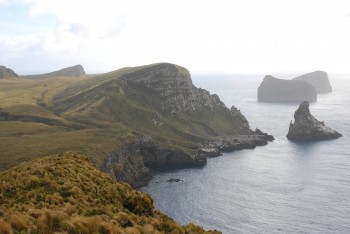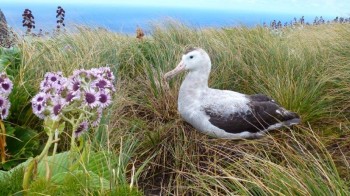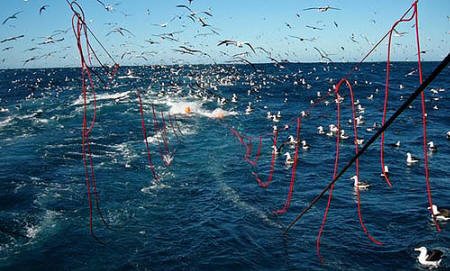Lucas Krüger (MARE—Marine and Environmental Sciences Centre, University of Coimbra, Portugal) and colleagues have published early on-line in the journal Polar Biology on Southern Giant Petrels Macronectes giganteus being attracted to fishing vessels at night.
The paper’s abstract follows:
“Many seabird species forage at night and potentially interact with nocturnal fishing activities. Jigging fisheries use powerful lights to attract squid, and such high intensity lights can be recorded using global location-sensing loggers (geolocators) attached to seabirds. We use this potential source of information as evidence for interaction of southern giant petrelsMacronectes giganteus with night fisheries during the non-breeding season. We compared the number of light spikes at night between sexes and evaluated whether the intensity of the light on those geolocator records matched periods of water immersion (wet–dry) of geolocators, as a measure of foraging activity. Females had more night light spikes than males, and although the activity on water was higher during nights with light spikes than nights without light spikes for both sexes, females had a higher probability to be resting on the water when peaks of light were higher. Females moved further north than males and used areas of higher squid fishery activities within Patagonian waters. This type of information is useful to record potential interactions with night fisheries and proposes that future studies should relate the accurate distribution of individuals (from GPS loggers) with light information (geolocators data) to highlight this undocumented interaction. Southern giant petrels are recognized as interacting intensively with fisheries off Patagonia waters with consequences for population dynamics (e.g. mortality through bycatch events).”

Southern Giant Petrel at sea, photograph by Warwick Barnes
Reference:
Krüger, L., Paiva, V.H., Petry, M.V. & Ramos, J.A. 2016. Strange lights in the night: using abnormal peaks of light in geolocator data to infer interaction of seabirds with nocturnal fishing vessel. Polar Biology DOI 10.1007/s00300-016-1933-y.
John Cooper, ACAP Information Officer, 21 April 2016

 English
English  Français
Français  Español
Español 




